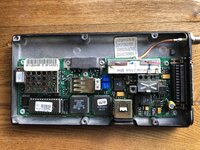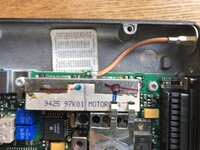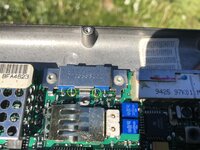Chipsmoker
Newbie level 6
I have a 1992 Motorola mobile phone that came installed in a vintage sports car we recently purchased. I want to preserve it for historic reasons and to keep the car as original as possible.
I realize the AMPS technology is long since obsolete so the phone is essentially a brick, but the buttons light up and beep when pressed so that’s cool.
I am concerned, however for the safety of those in the car. This phone operates at 3 watts and the antenna is mounted on the windshield putting it within a foot or two of the passenger’s head.
Since it cannot make calls anyway, would unplugging the antenna from the transmitter, eliminate any RF or will the transmitter itself be able to emit RF? Will doing so cause harm to the transmitter?
Thanks so much for reading this post. Here is more detail about the phone:
Installed by car maker in 1992 in a new car.
The handset is Motorola SCN2462A
The transmitter is Motorola S4015A FCC ID: IHDT5SZ2
TX power output 3 watts
I realize the AMPS technology is long since obsolete so the phone is essentially a brick, but the buttons light up and beep when pressed so that’s cool.
I am concerned, however for the safety of those in the car. This phone operates at 3 watts and the antenna is mounted on the windshield putting it within a foot or two of the passenger’s head.
Since it cannot make calls anyway, would unplugging the antenna from the transmitter, eliminate any RF or will the transmitter itself be able to emit RF? Will doing so cause harm to the transmitter?
Thanks so much for reading this post. Here is more detail about the phone:
Installed by car maker in 1992 in a new car.
The handset is Motorola SCN2462A
The transmitter is Motorola S4015A FCC ID: IHDT5SZ2
TX power output 3 watts


